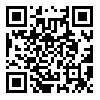目的 了解广西初中生视屏时间的现状,并分析其影响因素,为防控初中生视屏时间过长提供科学依据。方法 采用多阶段分层整群抽样的方法,在广西4个地级市共抽取2 834名初中生开展问卷调查,调查其性别、年龄、年级、家庭居住地、民族、父母文化程度、父母感情、学习成绩、家庭经济条件、照护人等基本情况,以及最近30 d学习日和休息日视屏时长状况,并采用广泛性焦虑障碍量表和9项患者健康问卷评估初中生焦虑、抑郁情况。采用多因素Logistic回归模型分析初中生发生视屏时间过长的影响因素。结果 初中生学习日、休息日视屏时间过长的检出率分别为18.4%、42.2%。学习日视屏时间过长与学习日视屏时间<2 h/d的初中生的民族、学习成绩、父亲文化程度、父母感情、留守情况、照护人、抑郁和焦虑情况比较,差异有统计学意义(P<0.05);休息日视屏时间过长与休息日视屏时间<2 h/d的初中生的年龄、年级、家庭居住地、民族、父母感情、留守情况、照护人、抑郁和焦虑情况比较,差异有统计学意义(P<0.05)。多因素Logistic回归分析结果显示,在学习日,其他少数民族、学习成绩中等/差、父母感情一般、重度抑郁、中度和重度焦虑是初中生发生视屏时间过长的独立危险因素(P<0.05);在休息日,年级为初一及初二、家庭居住地为县郊/镇上、壮族及其他少数民族、父母感情一般、留守、抑郁、中度焦虑是初中生发生视屏时间过长的独立危险因素(P<0.05)。结论 广西初中生学习日视屏时间过长的发生率低于休息日,民族、学习成绩、年级、家庭居住地、父母感情、留守情况、焦虑和抑郁是影响初中生视屏时间的因素,建议定期开展相关健康教育,采取学校-家庭联合监督,防控初中生视屏时间过长的发生。
广西医学 页码:1578-1585
作者机构:潘水波,在读硕士研究生,研究方向为青少年心理健康。
基金信息:广西自然科学基金重点项目(2022GXNSFDA035077);广西哲学社会科学研究课题(23FSH027);广西高校大学生思想政治教育理论与实践研究课题(2022LSZ028)
- 中文简介
- 英文简介
- 参考文献
Objective To understand the current status of screen time of Guangxi junior middle school students, and to analyze its influencing factors, so as to provide scientific basis for preventing and controlling the excessive screen time of junior middle school students. Methods A total of 2 834 junior middle school students were selected for performing a questionnaire survey from 4 prefecture⁃level cities in Guangxi by using the multi⁃stage stratified cluster sampling method, and their basic information with respect to gender, age, grade, family address, nationality, parents' educational level, parents' affection, academic performance, family economic conditions, caregivers, etc., were investigated. The screen time of junior middle school students in the last 30 days of study and rest days was also inquired. The Generalized Anxiety Disorder⁃7 Items and Patient Health Questionnaire⁃9 Items were used to evaluate the occurrence of anxiety and depression in junior middle school students. The multivariate Logistic regression model was used to analyze the influencing factors for excessive screen time in junior middle school students. Results The detection rate of excessive screen time on study and rest days was 18.4% and 42.2% in junior middce school students, respectively. There were statistically significant differences in nationality, academic performance, father's educational level, parents' affection, left⁃behind situation, caregivers, depression and anxiety between the students with excessive screen time on study days and those with screen time <2 hours per day on study days (P<0.05). There were statistically significant differences in age, grade, family address, nationality, parents' affection, left⁃behind situation, caregivers, depression and anxiety between the students with excessive screen time on rest days and those with screen time <2 hours per day on rest days (P<0.05). The results of multivariate Logistic regression analysis indicated that on study day, other minorities, average/poor academic performance, poor parents' affection, severe depression, moderate and severe anxiety were the independent risk factors for excessive screen time in junior middle school students (P<0.05). On rest days, grade 1 and 2, family address in county/town, Zhuang nationality and other minorities, poor parents' affection, left⁃behind, depression, and moderate anxiety were the independent risk factors for the occurrence of excessive screen time for junior middle school students (P<0.05). Conclusion The incidence rate of excessive screen time on study days is significantly lower than that on rest days among junior middle school students in Guangxi. Nationality, academic performance, grade, family address, parents' affection, left⁃behind situation, anxiety and depression are the influencing factors for screen time among junior middle school students. It is recommended that regular health education and school⁃family joint supervision should be carried out to prevent and control the occurrence of excessive screen time among junior middle school students.
-
无




 注册
注册 忘记密码
忘记密码 忘记用户名
忘记用户名 专家账号密码找回
专家账号密码找回 下载
下载 收藏
收藏
